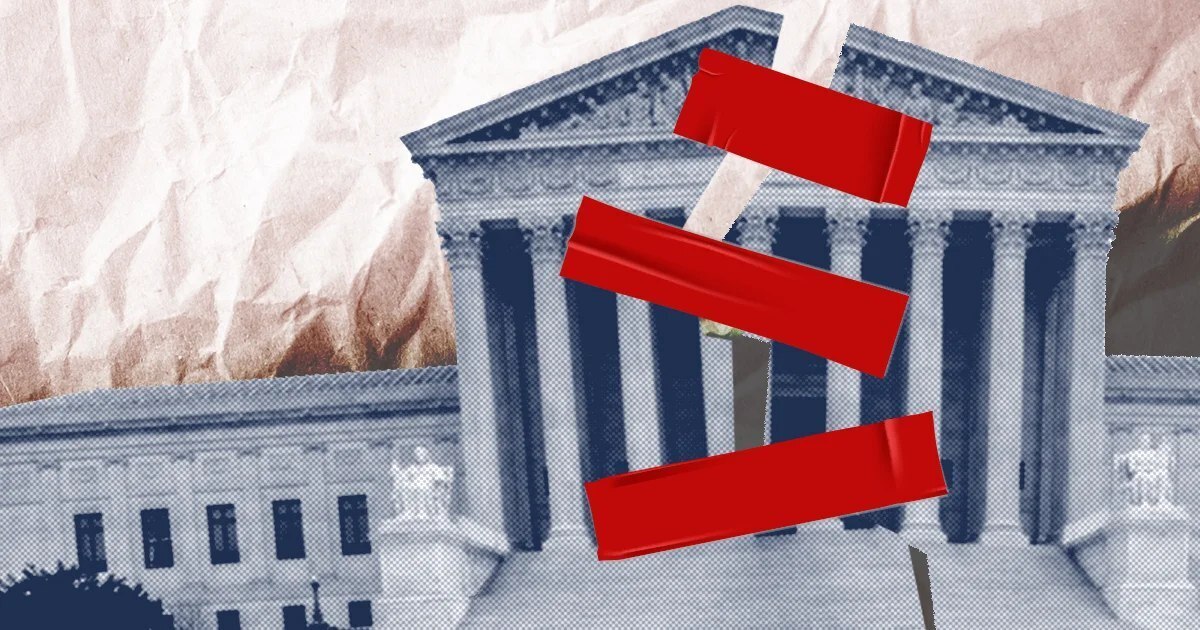
Radical Court Reform Will Destroy 230+ Years of Judicial Stability
In an attempt to stage a Supreme Court Coup, the nation’s most radical groups and numerous politicians keep making the case that the Supreme Court is somehow “broken.” The far Left says the Court needs to be “fixed.” It’s illuminating that the term “fixing” keeps floating around.
It does seem that some are indeed trying to “fix” the court. But not for the benefit of Americans or individual liberty or upholding our constitutional order. No, today’s so-called “court reform” effort is really all about the far Left rigging the Court in its favor. And they want to do it by any means necessary, whether it’s through court packing, court purging, ending life tenure, “ethics” codes and a host of other troubling proposals.
Here’s the thing. America’s court system has worked well for more than 230 years—and the Left’s proposals would only destroy it. Today’s assault on the Supreme Court and judicial independence is really about partisanship and those who have a thirst for more political power, explains Jordan J. Ballor—a fellow at First Liberty’s Center for Religion, Culture & Democracy.
“The president says that the Supreme Court is ‘mired in a crisis of ethics’ and refers to a lack of public trust in the court,” Ballor writes in an op-ed for WORLD.
“But each of the three areas President Biden hopes to address in his proposed reforms reflects a fractured political system rather than a problem with the Supreme Court.”
Vice President Kamala Harris once claimed that “we are on the verge of a crisis of confidence in the Supreme Court.” But Americans do not agree.
Most strongly support the Supreme Court and have a favorable view of our judicial system. It’s true that trust in all government branches has faltered in recent years. However, recent trends show that about 2 in 3 Americans still have confidence in the U.S. Supreme Court. What’s more, the judiciary consistently ranks as the most trusted branch of the federal government, according to Gallup.
Law professors and constitutional scholars are urging Americans to be cautious when they hear about public “disapproval” of the Supreme Court. They say those numbers are being skewed, largely for partisan motives.
“Polling data released from Gallup this week reveals the public’s negative sentiment against the Supreme Court’s work is anchored by Democratic respondents, not by independents and Republicans,” according to The Washington Examiner
“The data suggests that the Biden proposal is about appealing to his base within the party more than it is about responding to broader public concerns about the Court,” Jonathan Adler, a law professor at Case Western Reserve University, told the Examiner.
Jonathan Turley, a professor at George Washington University Law School, echoed those concerns. “Polling shows that the response to President Biden’s ‘reforms’ has been the sound of one hand clapping.”
“This is all about driving, driving their base to the polls,” said John Malcolm, vice president of the Institute for Constitutional Government at the Heritage Foundation. “That’s what this is, and expressing their displeasure, as they have for years, about the one branch of government that the far-left does not control.”
Others keep trying to paint a caricature of a Supreme Court bitterly divided along ideological lines, with conservative and liberal justices allegedly at each other’s throats. Again, the numbers disagree.
“Looking at the last Supreme Court term, none of this is true. The Court’s opinions were nuanced and largely unanimous,” per one expert at the Pacific Legal Foundation. “This term, the Court ruled unanimously in almost half (46%) of cases, which was similar to the year before (48%) and a significant uptick from the term before that (29%).”
Supreme Court statistician, Dr. Adam Feldman, pointed out that “the concluding rate of unanimity (approximately 46% of all decisions in the 2023 term) is among the highest in recent memory.”
An old saying says that “if it ain’t broke, don’t fix it.” Court-packing is a “solution” to a problem that doesn’t exist. We do not need to increase the size of the nation’s highest court. The Supreme Court has had nine justices since 1869. We don’t need to “fix” that number, because it’s worked tremendously well for more than 150 years.
Plus, changes to the size of the Supreme Court are incredibly rare. There have only been seven changes in more than 230 years since the Constitution was ratified. According to an extensive historical study commissioned by First Liberty, only two previous changes in the Court’s size can arguably be categorized as outright court-packing attempts. Those few partisan attempts to change the composition of the Supreme Court offer no justification for packing the Court today.
Ending life tenure via judicial “term limits”—otherwise known as court-purging—is also a disguise for a radical power grab. Supreme Court justices have held lifetime appointments for ALL of American history, since the first day the Constitution went into effect. That system isn’t broken. Life tenure has helped preserve our rights, liberty, judicial independence and the stability of our legal system.
The late Justice Sandra Day O’Connor famously observed that under the American system, our courts hold neither the power of the purse nor the sword. A court’s power lies with the American people. The far Left attacks on the Supreme Court are merely a power play to destroy the legitimacy of the Court and crush judicial independence.
Live not by lies. The truth is that the Supreme Court remains a strong, legitimate and credible institution with incredible staying power. May it ever be so.


